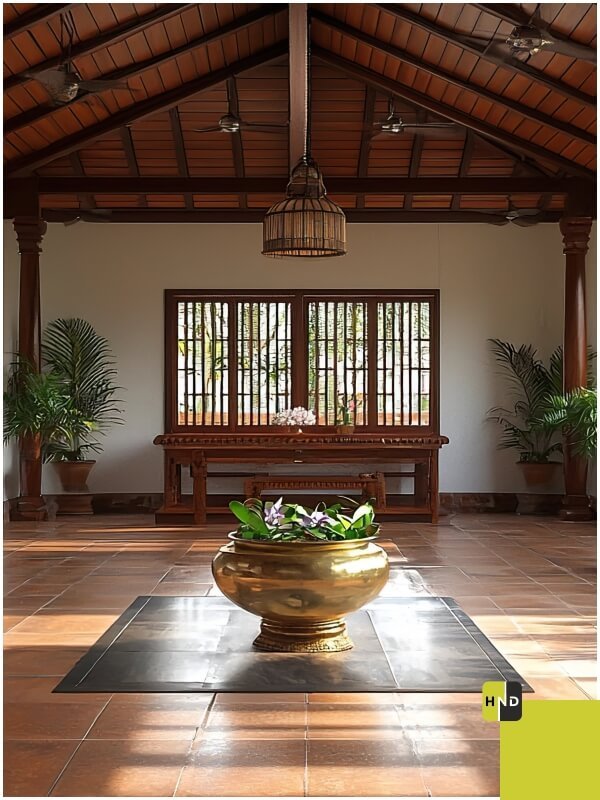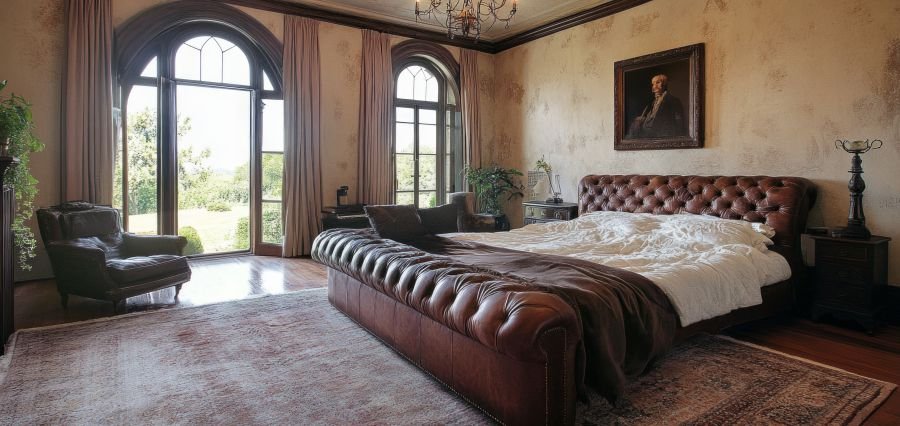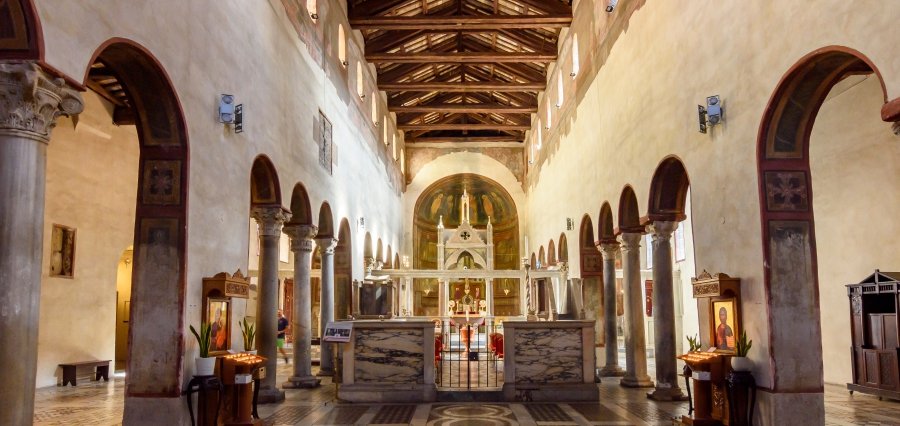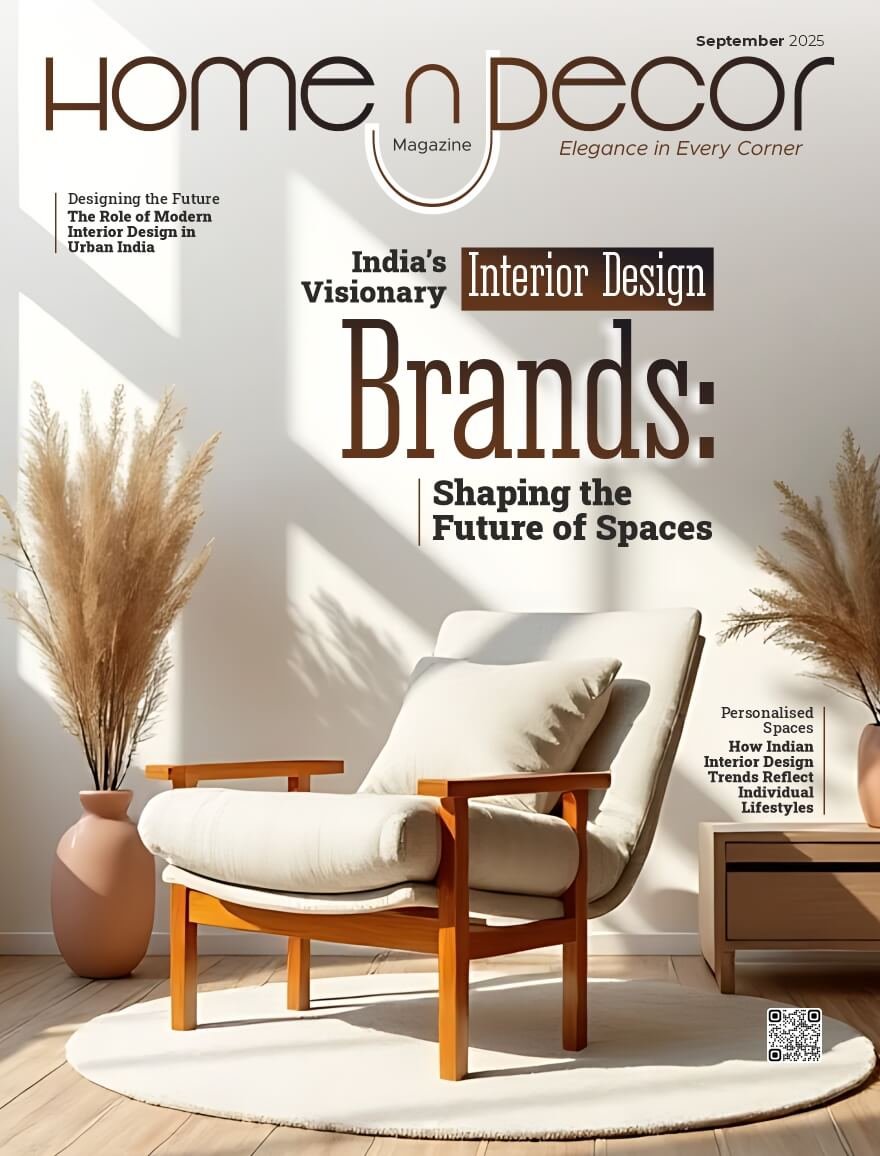Personalised Spaces
Indian interior design in 2025 tells a deeply personal story, blending cultural heritage, evolving lifestyles, and boundless creativity. Houses in India have now become a family shrine, a home that embodies the individual characters, memories, and desires of its inhabitants. The contemporary home-owners desire an interior that gives a focus on individuality as the design choices reflect their cultural backgrounds, their lifestyle, and their values. Colour palettes, pieces of furniture, all of them are designed to indicate personal identity and everyday life patterns.
Colour and Texture: Emotion and Heritage in Every Hue
Colour has always been a vital part of Indian culture, and this remains true in 2025’s interior trends. Homes are replaced with radiant and welcoming colours instead of minimalist whites and cold neutrals. The bright jewel colours like emerald green, mustard yellow, and deep maroon are emotive and heritage-related, bringing life and warmth to the spaces.
Besides colour, texture is an important aspect. The woven fabrics, layered carpets and textured walls are an aspect of homes that make them more dimensional and rich in sensory aspects. The physical sensation of soft velvets in contrast to natural jute or homemade ceramics warms and stays natural, creating inviting spaces that feel lived-in and loved.
These choices reflect a desire to merge the emotional resonance of traditional Indian aesthetics with contemporary comfort.
Tradition Meets Modern Innovation
One of the most compelling trends in Indian interior design is the fusion of traditional craftsmanship with modern aesthetics. Homeowners are growing fond of artisanal details, hand-cut woodwork, block-printed textiles, and brass decorations that respect the artistic history of India.
Meanwhile, this legacy is combined with smooth lines of furniture, open space, and intelligent technology. This combination makes the houses look classic and modern, connecting the generations and sensitivities. It provides a chance of dynamic spaces in which the antique royal armchair shares the space with a modular couch and intelligent lighting. These interiors narrate lineages besides satisfying the needs of the new generation’s life.
Sustainability as a Lifestyle Choice
People create environmentally friendly interiors using recycled materials such as reclaimed wood, bamboo, recycled glass and environmentally friendly paints.
Biophilic design incorporates natural features such as plants, water, and sunlight to form natural and comfortable environments. The decision to include these natural features is a larger trend in which individuals are concerned to live a good and beautiful existence with regard to the environment.
Multifunctional Spaces for Modern Living.
Changes in the lifestyles of Indian households due to hybrid work and socio-cultural transformations are redefining the traditional use of homes. The current interiors are multifunctional with work, relaxation, fitness, and socialisation in the same space. This demands a design advancement that focuses more on flexibility without compromising on beauty.
Adjustable and versatile furniture solutions have become a massive trend. Modular sofas that convert to guest beds, foldable desks, and hidden storage optimise space. The smart home technologies, like voice-activated lighting and electric curtains, simplify daily chores and introduce extra convenience based on the particular routines. The outcome is a house that breathes and lives with the needs of its owner, dynamic, efficient, and stylish.
Maximalism with Meaning
Unlike the minimalism of the previous years, 2025 prefers maximalism with a purpose: spaces full of personality, narratives, and cultural artefacts. Collected collections of family heirlooms, artwork, textiles, and souvenirs celebrate the homeowner’s journey.
This overlay technique combines colourful patterns, textures, and colours into spaces that are rich, friendly, and very personal. This then makes maximalism a storytelling device in which all corners of the corner contain a memory or a moment.
Artisanal Craftsmanship Takes Centre Stage
The cultural restoration of Indian crafts holds special significance in interior design. Carpets made by Jaipur, terracotta vases made by Khurja, ornate wooden furniture, and brass decoration are used not only to enhance the aesthetics but also to preserve the cultural heritage and help the local economies.
These hand-made items add uniqueness and authenticity to the homes, setting them apart from mass-produced interiors. These types of decor relate residents to a greater sense of place and tradition, basing contemporary living on the culture.
Final Thoughts
To incorporate these trends and reflect individual lifestyles, homeowners should focus on what matters most in their daily lives. The most effective way to live thoughtfully is to use versatile furniture that adapts to the changing needs and utilises natural and sustainable products.
Tailor-made interior design is not a luxury but a need of Indian families that desire to have space to match their rhythms, backgrounds, and dreams. In 2025, how a space is lived in matters just as much as how it looks. The new trends assist individuals to create homes that represent them and add more happiness, comfort and beauty in their lives.






